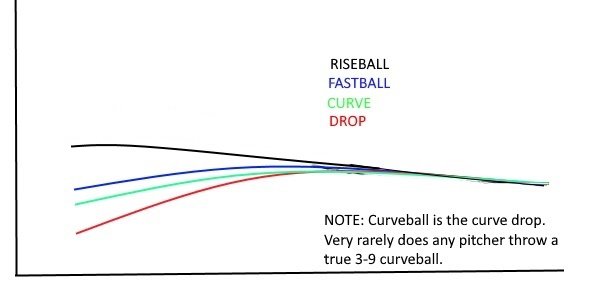- May 27, 2013
- 2,387
- 113
My best guess would be because a vertical movement pitch will not stay in the same bat swing plane for long as it is dropping or rising; however, a curve, if it’s a true curve, will stay in the bat swing plane longer. Same with a screwball.This concept gets repeated a lot and I still haven't seen an explanation for it. Studies have shown that variations in velocity are the most difficult for batters to adjust to, but I haven't seen any that address vertical vs horizontal movement.
Plus you are changing the eye level of the batter with vertical pitches which I assume would be more difficult to adjust to.
That‘s just my best guess, though. I can picture what I want to say but am having trouble finding the right words to describe it.




